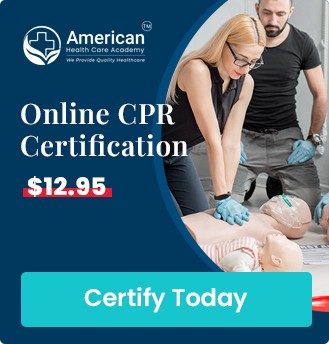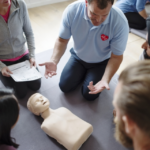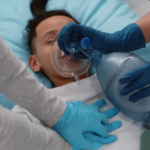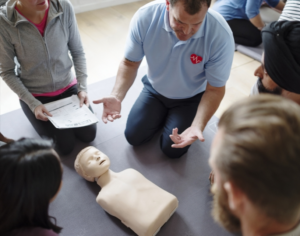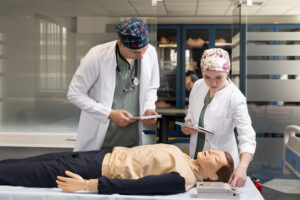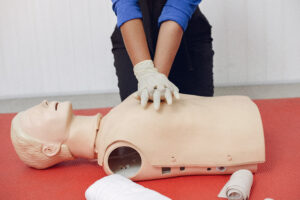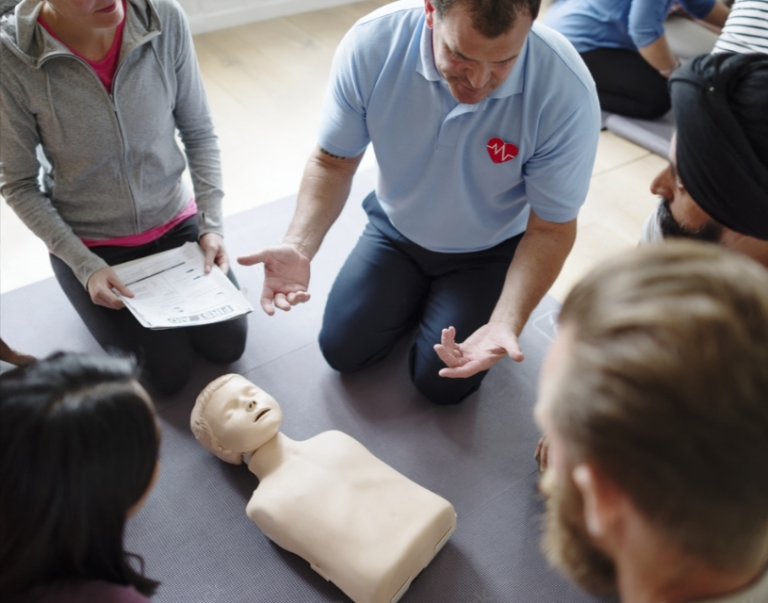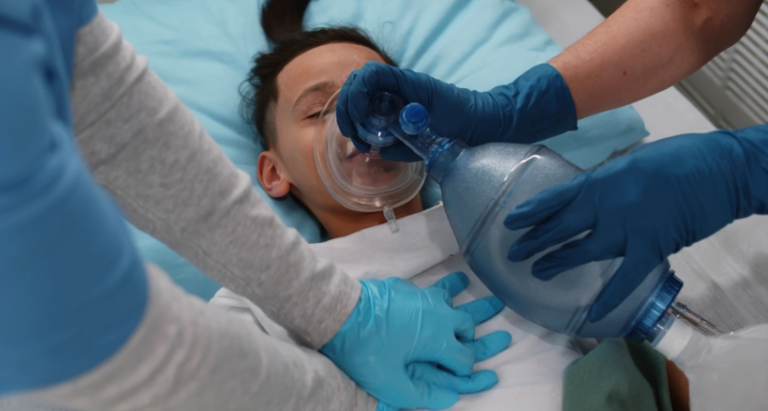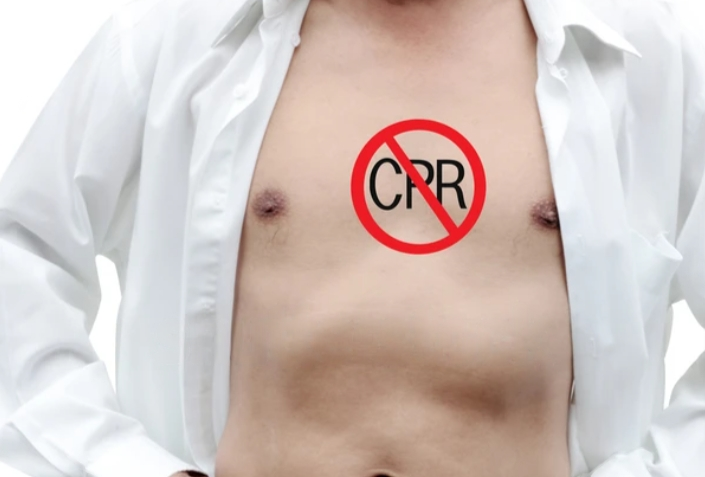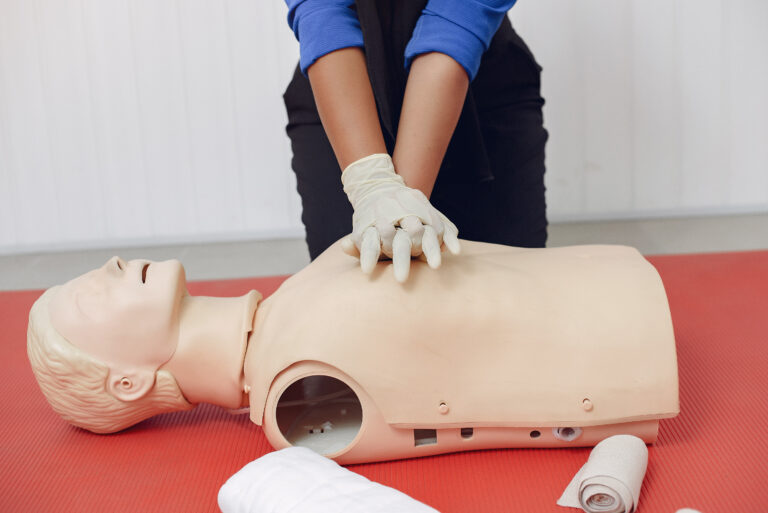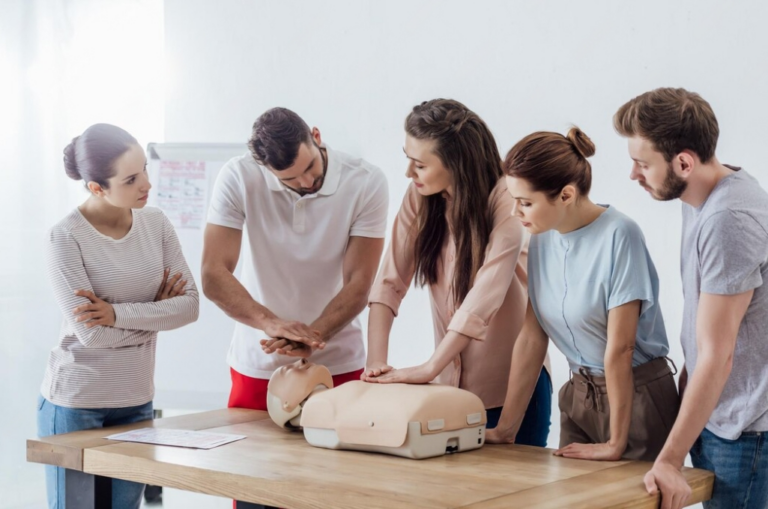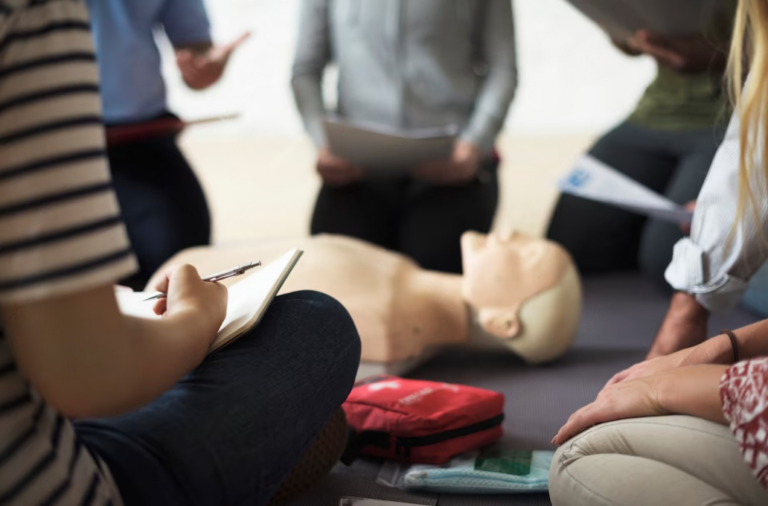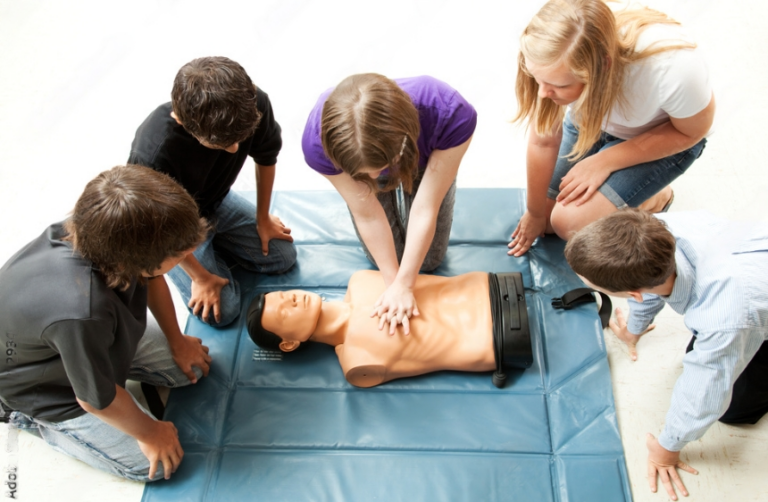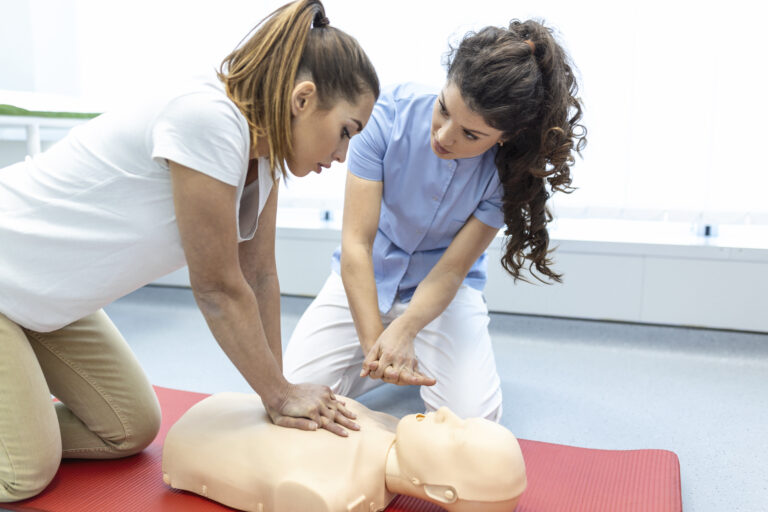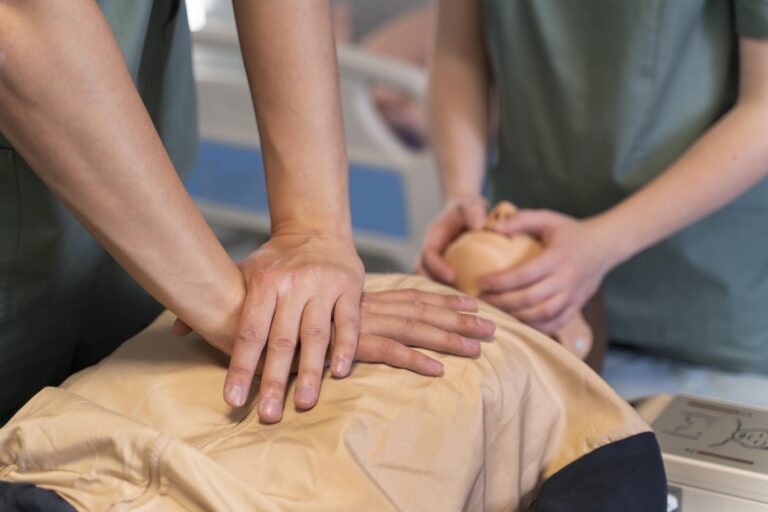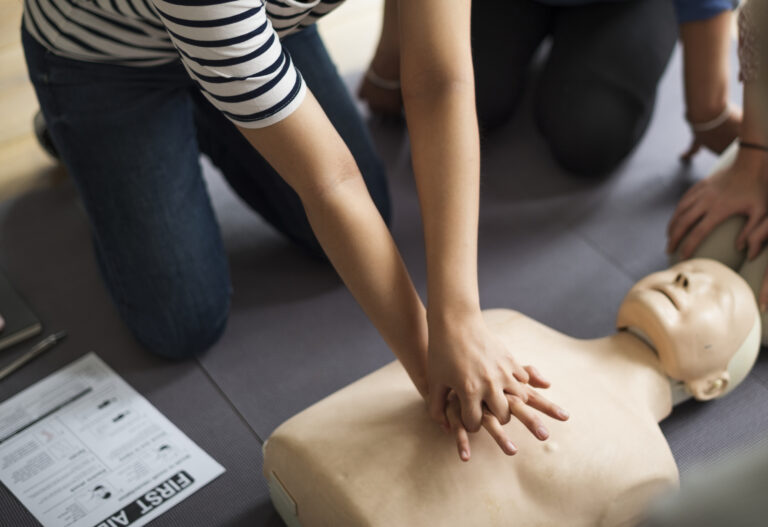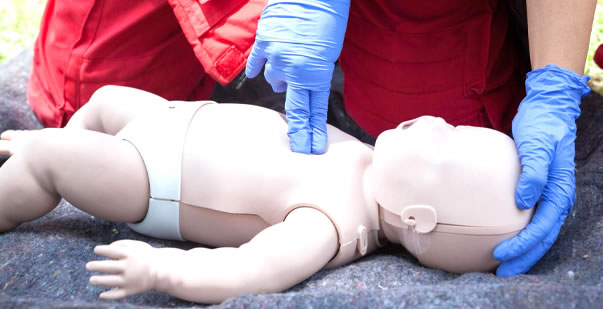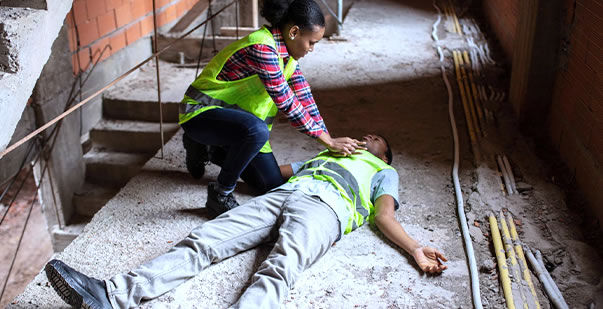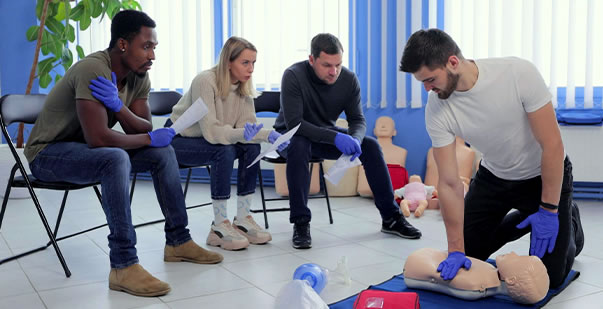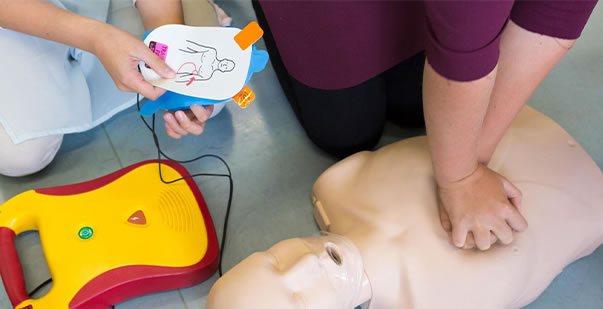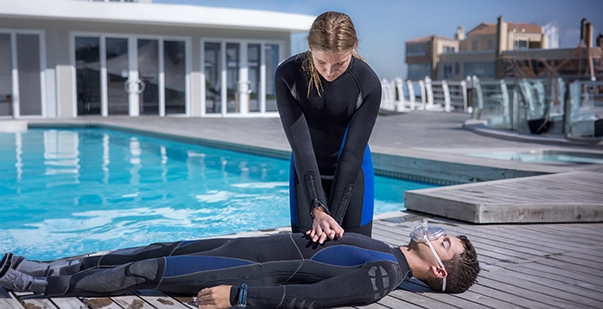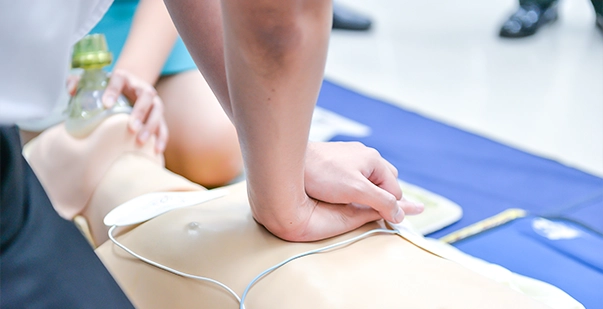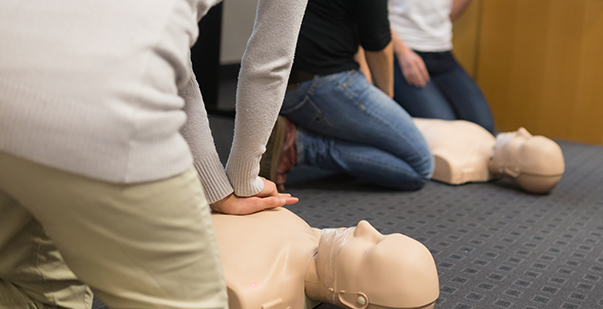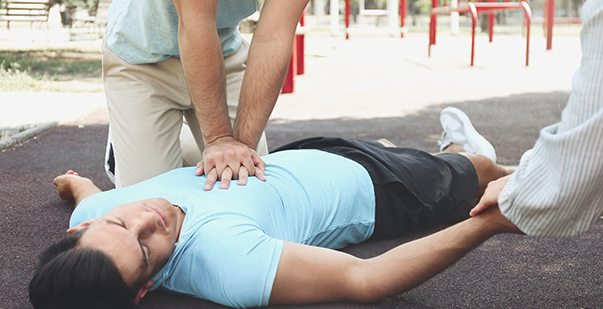It is crucial to know how to perform CPR properly. A victim of cardiac arrest is more likely to survive when saved with a defibrillator alongwith effective CPR. When performed by a bystander or medics who have received proper training, the chances of survival are higher. In an emergency, doing proper CPR is essential, especially since sudden cardiac arrest is the leading cause of death in the US.
An instructor-led, classroom-based CPR course gives families, friends, and community members a chance to learn the fundamentals of CPR in a fun, social setting. A classroom program uses the AHA’s “practice-while-watching” method. It has been proven to increase learning and retention in group CPR training. Additionally, a classroom setting is beneficial for learners who value peer contact and feedback while picking up new skills. High-quality course materials are provided to each student for continuous reference.
Why should you learn CPR near you?
CPR is one of the most crucial things you can do for someone who is not breathing or has no pulse. Taking a group CPR certification program from a training provider listed on CPR Care Near Me will teach you how to execute these life-saving skills with utmost confidence. It will also provide you the chance to save the lives of your loved ones. If you choose to take a classroom course, then learning CPR at an institute near you will save time commuting.
Parents, schools, students, grandparents, babysitters, and anybody interested in learning life-saving techniques should take a group CPR training session. For corporate CPR certification for groups, it’s a good idea to find a local training provider that is near you. It will be convenient for you and your staff members to train on-site under one roof in a group of 5 or more. Keep reading as we tell you why you should consider group training.
Why must you get CPR training in groups of 5 or more?
Cardiopulmonary resuscitation, or CPR, is a life-saving procedure. It is performed when someone’s heart has stopped beating or their breathing has stopped. It helps keep blood and oxygen flowing. CPR can significantly raise the chances of survival for someone experiencing cardiac arrest. This is crucial when you are awaiting emergency medical help.
For your business, group CPR training for small and large groups offers a wide range of extra advantages:
- Your staff members will always be prepared for emergencies thanks to CPR training. Emergencies can occur anywhere, at any moment. CPR instruction can give your staff the knowledge and abilities they need to react to medical emergencies in the best possible way.
- Group CPR training is fun when done in a group. Group classes are designed to be interactive, engaging, and enjoyable. These classes are taught by certified and experienced safety specialists. They are specifically tailored to the needs of your organization. There is a noticeable morale boost as a result of teamwork and cooperative learning.
- Training in group CPR boosts self-confidence. The main aim of group CPR training is to ensure that your staff members feel prepared and capable of performing effective CPR in an emergency. CPR training gives knowledge to your staff members to feel in charge and confident, such that they can respond appropriately and without hesitation.
- Performing CPR is challenging. Most inexperienced people do not conduct CPR correctly. One runs the danger of injuring someone while giving CPR. A lot of times, ribs are broken. Untrained individuals who attempt CPR frequently are unsure of how hard to push. Time can be lost, which lowers the likelihood of survival.
- Not just cardiac arrests but heart attacks also require CPR. Electric shock, allergic reactions, drowning, choking, suffocation, and drug overdose are typical medical emergencies that may call for CPR.
- Group training is cost-effective. Most CPR training service providers offer discounts on group CPR training packages.
Traditional vs. Blended Learning – What’s better?
Learning CPR is a two-step process:
- In the first part of the CPR certification process, people are instructed step-by-step how to conduct CPR.
- The second part of the training enables the students to test their newly acquired knowledge of manikins.
Traditionally, CPR-AED training courses are typically taught by an instructor in a classroom setting. Time, logistics, money, and discomfort from being in a classroom setting are frequently obstacles to the standard training program for both the trainer and the course participant. With the development of technology, new training formats are emerging. Blended teaching methods are becoming more popular nowadays owing to the ease of accessibility and convenience.
“Blended learning” is a method in which eLearning is combined with a more traditional classroom setting so that students can learn and also complete their work at their own pace. American HealthCare Academy (AHCA) offers a blended learning program for group training where CPR is being taught through both online and classroom learning techniques. The CPR course taught by them is nationally accredited and accepted, designed and taught by AHCA and OSHA certified trained experts.
Blended learning method is used to keep the students engaged, and make their entire learning experience fun and fruitful. People with busy schedules, such as students or people juggling work and family obligations, may find it challenging to find the time to take part in an extensive in-person group training. With blended learning, students can complete the majority of their course work at their own pace from their homes, schools, or places of employment.
Conclusion
Group CPR training should be made essential for every company, regardless of size. Book your group CPR training packages at American HealthCare Academy for as many staff members as required. We are sure you are ready to make your workplace safer and make it more prepared for emergencies. Explore CPR Care Near Me, where you can find training institutes near you.


